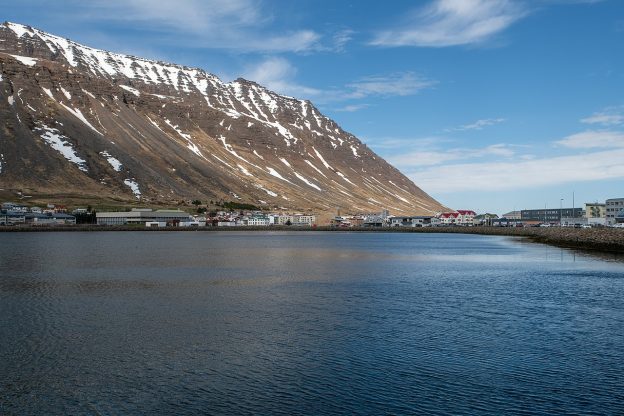As we pulled into each port, we were awakened every morning by the cheery voice of our Cruise Director, Katy Syrett, a dark-haired Scottish beauty who also sings and dances in the after hours. It reminded me a bit of the daily announcements that greeted Patrick McGoohan in The Prisoner, without the sinister undertone.
Ísafjörður (“ee-sa-fyo-tthur”) is the largest town in the Westfjords, which is relative, given only 2,700 people live there permanently. It is located on the Skutulsfjörður (“skoo-tuls-fyo-tthur”) fjord, a branch of the larger Ísafjarðardjúp (“ee-sa-fyo-tthar-djup”) fjord. In 2023 Ísafjörður extended the port to accommodate larger cruise ships, but also set a limit of 5,000 passengers disembarking per day to avoid overwhelming the town’s resources.
Our ship docked near the Naustahvilft Troll Seat, (“noy-stah-klift”) a large depression in the mountains next to the fjord. According to legend, sunlight turns trolls into stone and Naustahvlift was created when a troll hid in the hollow in the cliff to avoid the approaching dawn. Her enormous weight turned it into a seat; the adventurous can hike the trail and take in a spectacular view of Ísafjörður.
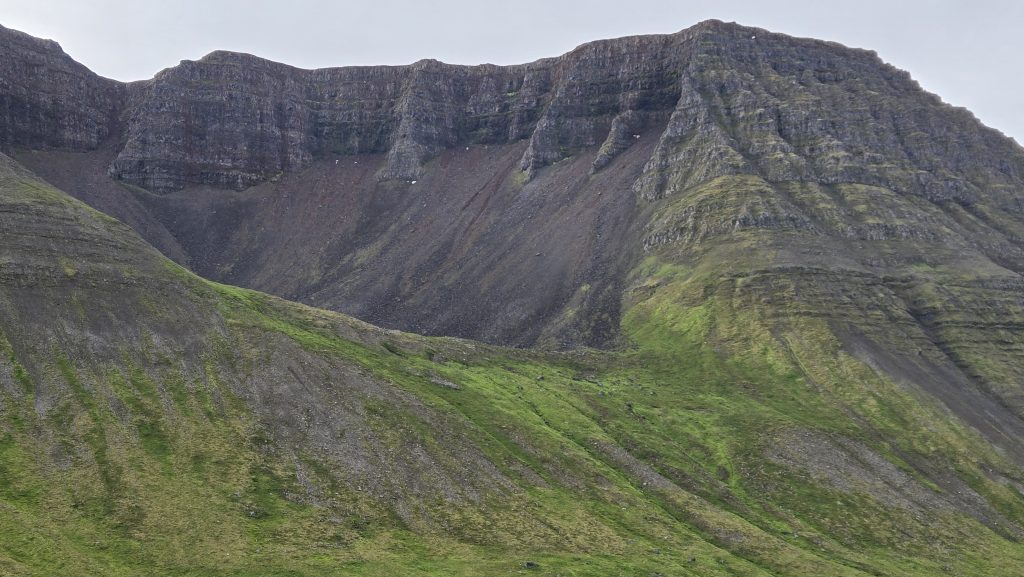
Today’s activity was touring Ísafjörður and Bolungarvik (“bol-un-gar-vik”), a small fishing village about 8 miles north. We disembarked from Deck A, the lowest passenger-accessible deck, this time through a narrow corridor and on to a long ramp with a very slight decline. Getting back on the ship was a bit of a nightmare as we ran into people headed out for the next tour. After that, the staff started staggering departures and arrivals.
Our tour guide was a pleasant and amusing young man from the U.K. who was far easier to understand and more personable than our native Icelandic guide on Sunday. We passed by two men loading a stretcher into a hearse as we were leaving the dock. I don’t think it was anyone from our ship, but you never know.
The bus meandered through the narrow village streets, past small guest houses and hotels in the city center. Our guide pointed to a construction site where Ísafjörður is adding land mass into the harbor to build student housing for the University Centre of the Westfjords, whose enrollment increased substantially after COVID restrictions were lifted.
We headed out of town on the narrow highway hugging the shoreline. We saw four large, circular structures jutting out of the water; these are open-net salmon farms which contribute to the economy, but at a cost. Farmed salmon have escaped from the pens, threatening the survival of wild salmon, whose global numbers have been dwindling. Sea lice and the pesticides used to treat them, along with the salmon’s own waste, pollute the water and may cause dangerous algae growth.
The bus entered the Bolungarvíkurgöng (“bol-un-gar-vik-uhr-gung”) Tunnel a few miles further along the road. The tunnel, 5.4km/3.36mi long, was opened in 2010, bypassing the treacherous coastal road which was susceptible to rock falls and avalanches from the Óshlíð (“ohs-lith”) mountains. The tunnel is well lit and there are turnouts along the way for passing.
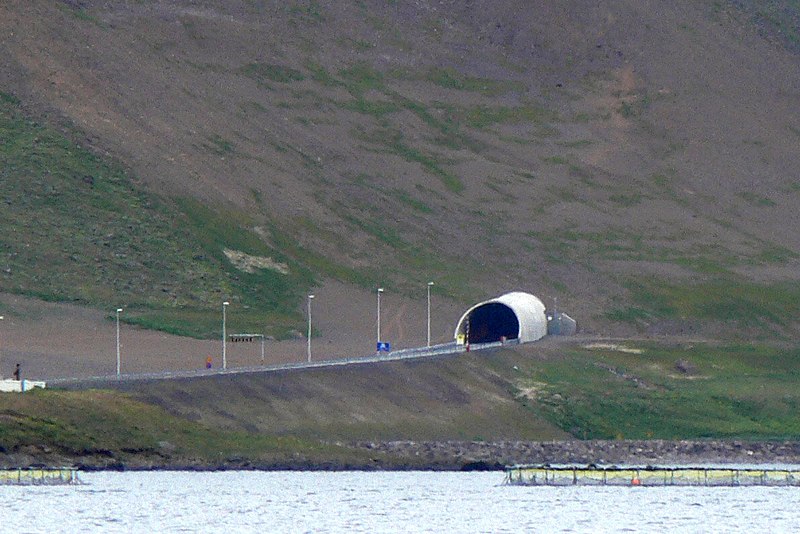
The Vestfjarðagöng (“vest-fyar-tha-gung”)Tunnel, west of Ísafjörður, is the longest tunnel in Iceland and has three arms which meet in the middle. That would have been an intriguing sight!
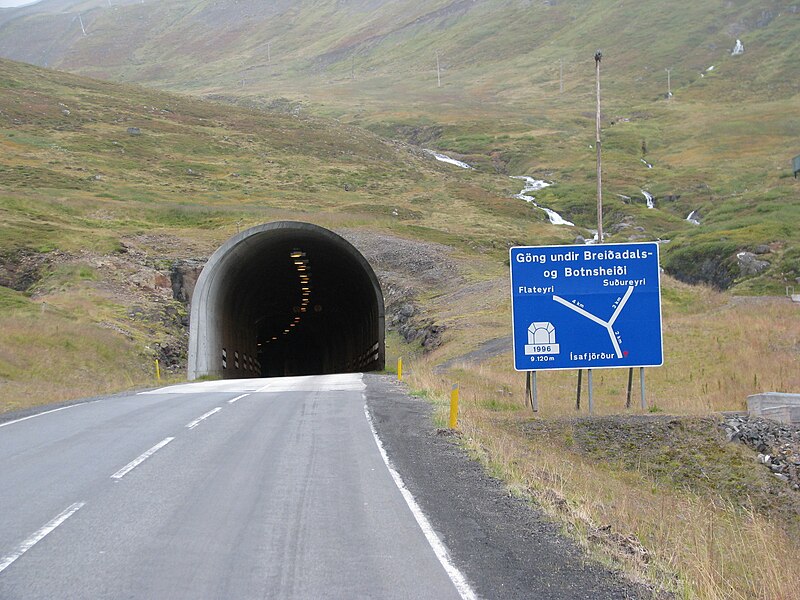
Trolls, elves, monsters and ghosts are part of Iceland’s storytelling heritage. Most Icelanders hedge their bets and won’t openly deny their existence…just in case. So, when the Bolungarvíkurgöng tunnel was being excavated, the construction workers started the day by apologizing to the trolls within the mountain for disturbing them…just in case.
Bolungarvík is a small coastal village (pop. 1,022), founded in 940 AD. It was one of the largest fishing stations in Iceland for centuries. Fishing and fish processing became the primary source of income at the end of the 19th century. The town was inaccessible except by boat until 1950 when the first road to the village was completed. Between April and September sport fishermen flock to Bolungarvík angling for cod, redfish, haddock and halibut. (The average halibut is 100kg/220lbs!)
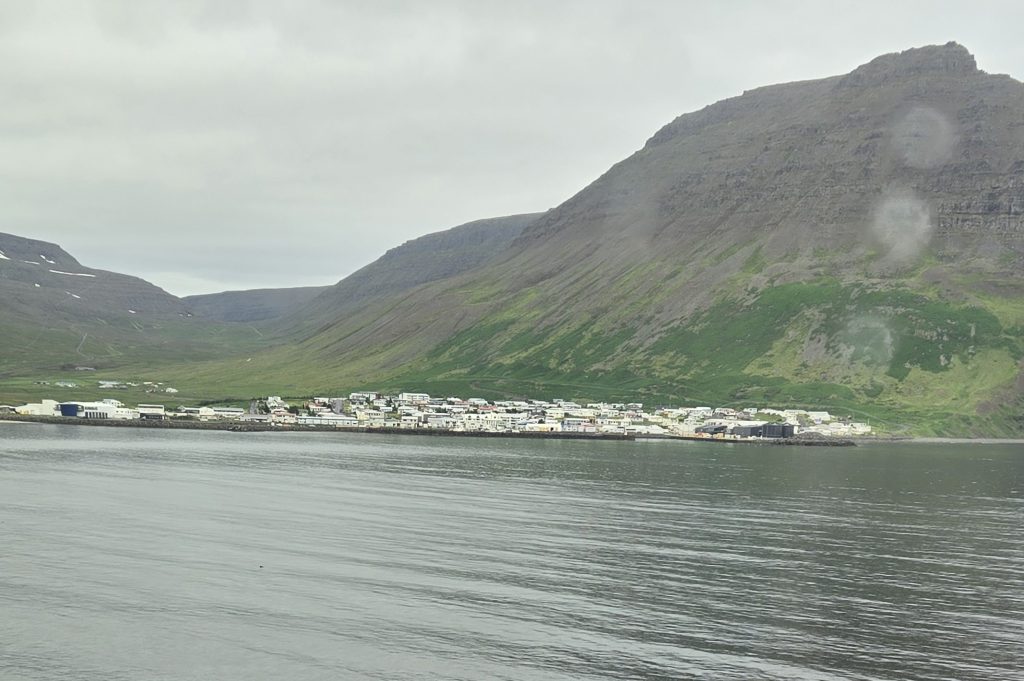
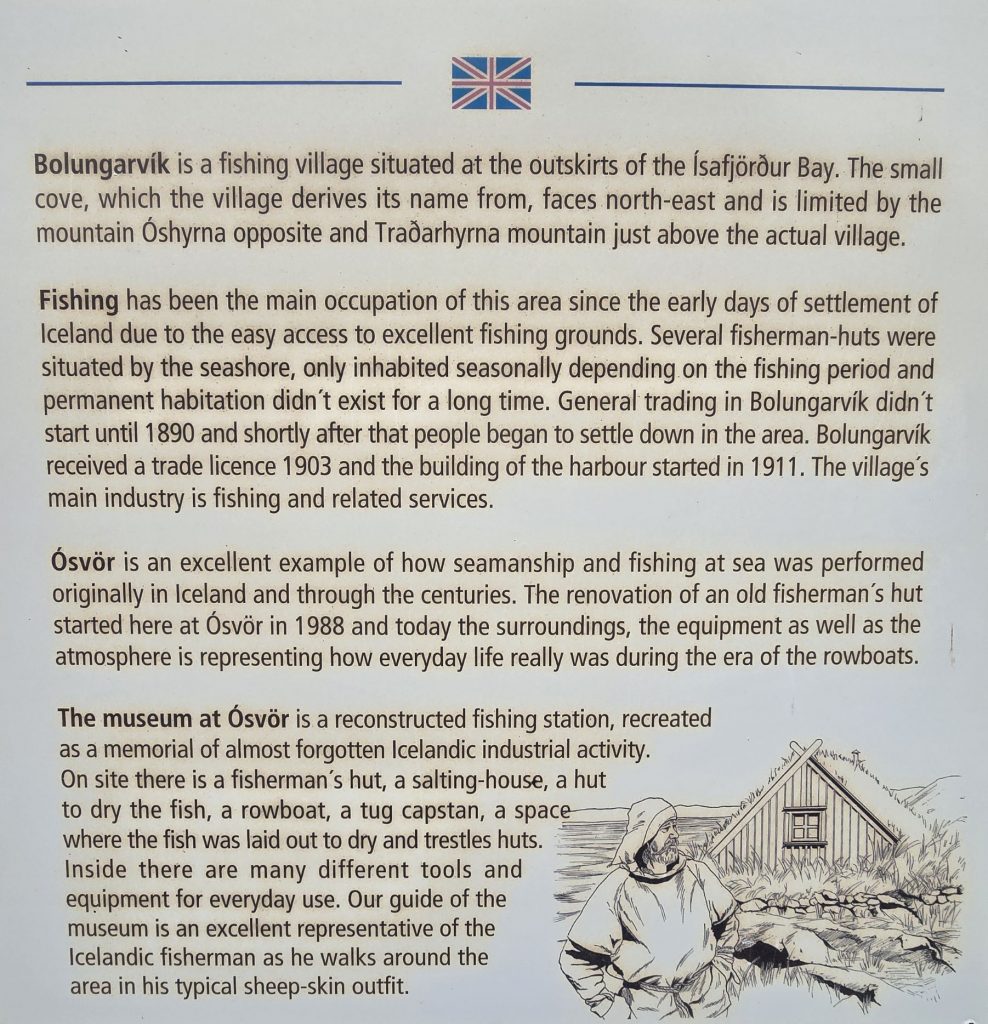
According to legend, Þuríður (“thur-ee-thur”) Sundafyllir and her brother, Þjóðólfur (“thyo-thol-fur”), the founders of Bolungarvík, got into a pissing contest after Þuríður granted her brother all the land he could fence in one day. Þjóðólfur didn’t fence as much land as he’d anticipated and became angry when his sister wouldn’t let him have any more. Out for revenge, he tried to steal one of Þuríður’s oxen, but she caught him.
The siblings were also sorcerers and cast spells on each other. Þuríður said, (and I’m paraphrasing), “Yo, sheep dung for brains! For trying to steal my ox, you shall become a rock that birds will defecate on for eternity!” Þjóðólfur turned to stone and fell into the bay, where birds shit on him until 1936 when, according to the locals, he mysteriously disappeared.
Þjóðólfur retaliated. “You wanna play that game, bee-yach? YOU shall forever become a rock where the winds blow the strongest.” And with that, Þuríður turned into a stone that sits at the top of Óshlíð. How he managed to cast a spell when he was already turned to stone was never explained in the legend.
We drove through town and stopped at Félagsheimilið Bolungarvík, (“fya-lath-shay-mi-lith”) the town’s community center, where a local musician performed two of his own compositions. The first was about an obscure wrestling tradition, (possibly Glíma (“glee-ma”), but I wouldn’t swear to it) and the second lamented the long Icelandic winters. Both were in Icelandic, so we couldn’t understand any of the lyrics, but he was passionate.
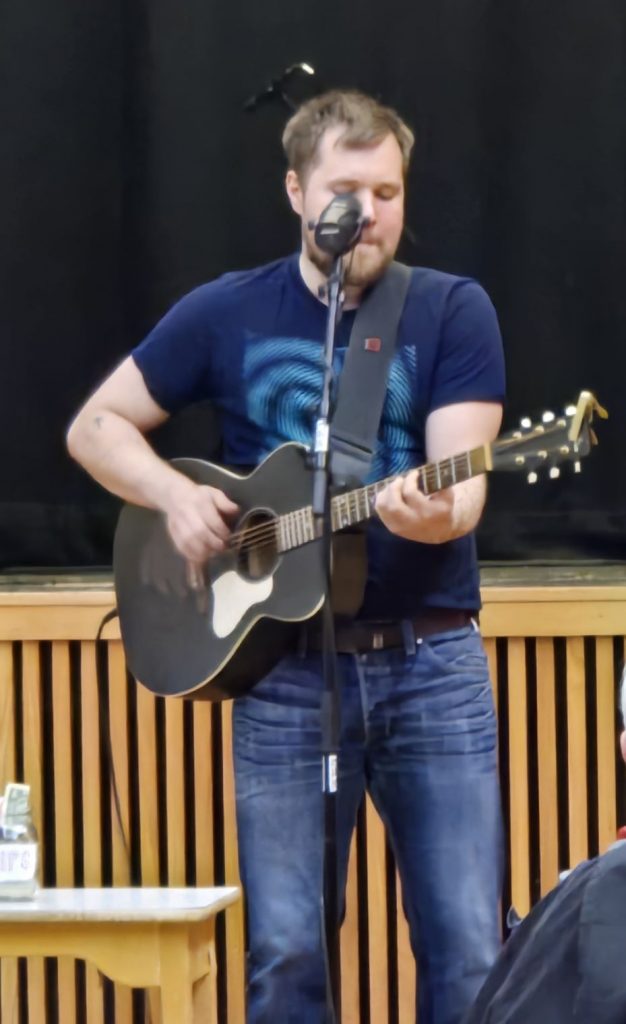
We reboarded the bus and on our way out of town our guide talked about the Arctic Tern, a bird that one site described as “so graceful and yet such a nuisance.” Instead of picking secluded areas, terns build their nests wherever the hell they want and become very aggressive if an unsuspecting human wanders near the eggs. They will dive bomb one’s head and, if they are particularly miffed, shit on you for good measure. Our guide was once attacked trying to draw the terns away from the tourists in his charge.
The bus turned around across from Óshólar (“oh-sho-lar”) Lighthouse and drove back to the Ósvör (“ohs-vur”) Maritime Museum, a 19th century replica of a fishing station. There are three small buildings: a fish drying platform, a salting shed, and crew quarters with tools. An old fishing boat sits on the beach. The museum’s guide is dressed in traditional sheepskin fishing gear, minus the fish oil waterproofing actual fishermen used, which gave it an offensive smell! The path to the buildings was rocky and somewhat steep, so we skipped this part of the tour. (Note to self: next time bring the walking sticks you packed!)
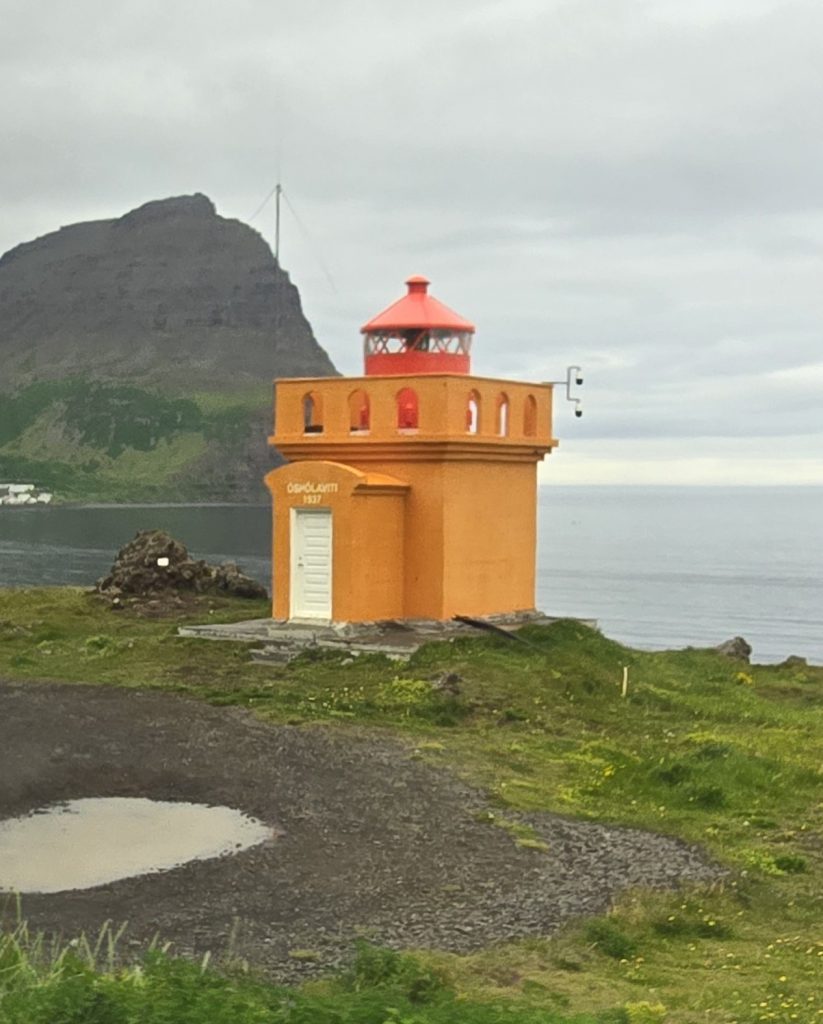
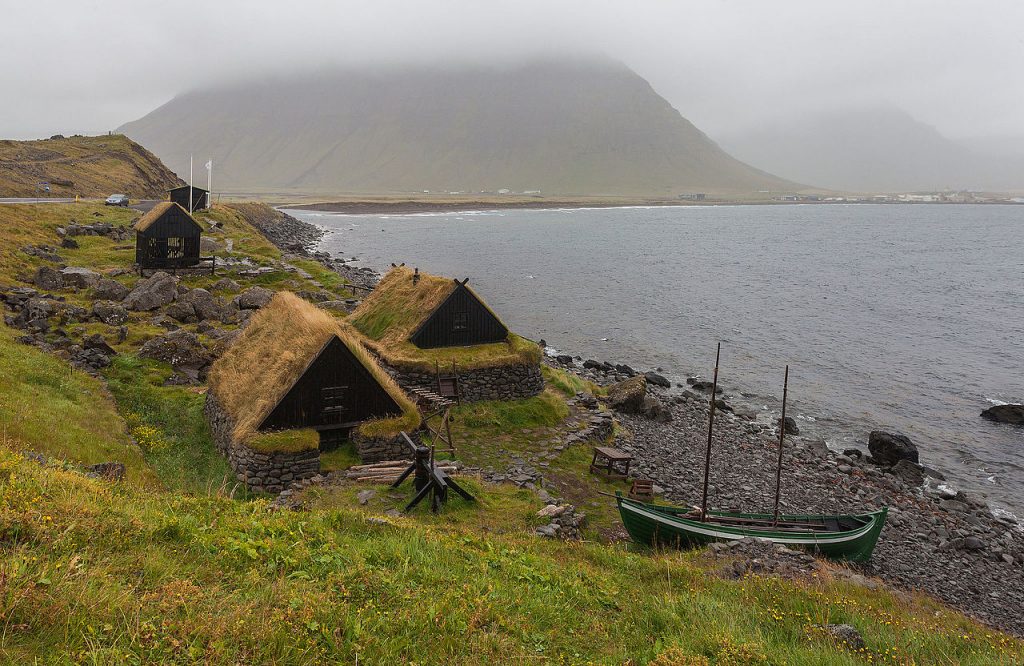
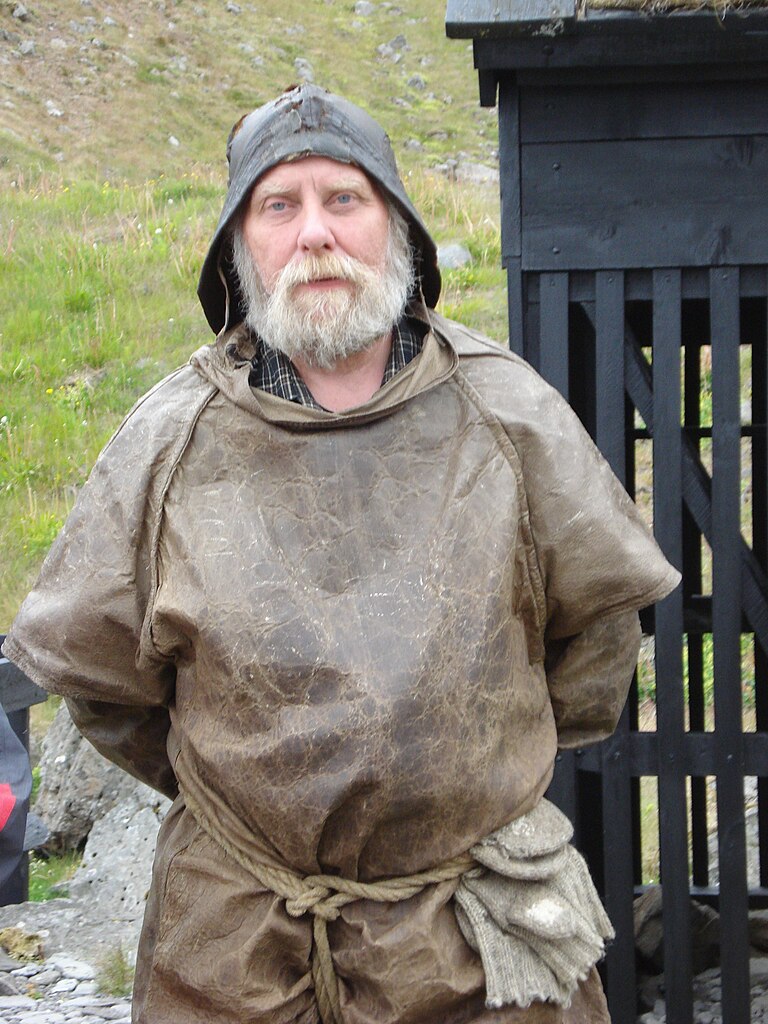
The bus took us back into Bolungarvík where we turned around again and headed back to Ísafjörður. We went through the town center, past the local hospital and Íþróttahúsið á Torfnesi (“ee-throw-tha-hoo-sith”), the Torfnes Sports Hall, then west out of town to the Bunárfoss (“boo-nyar-foss”) Waterfall in the Tungudalur (“toon-goo-tha-lur”) Valley, where our guide promised us we would sample a glass of the purest water in Iceland.
Bunárfoss is not as spectacular as Seljalandsfoss or Skogafoss, but it’s still impressive. The more physically fit can climb 80m/262ft to the top of the falls for a view of the valley below. The waters continue in a gentle brook.
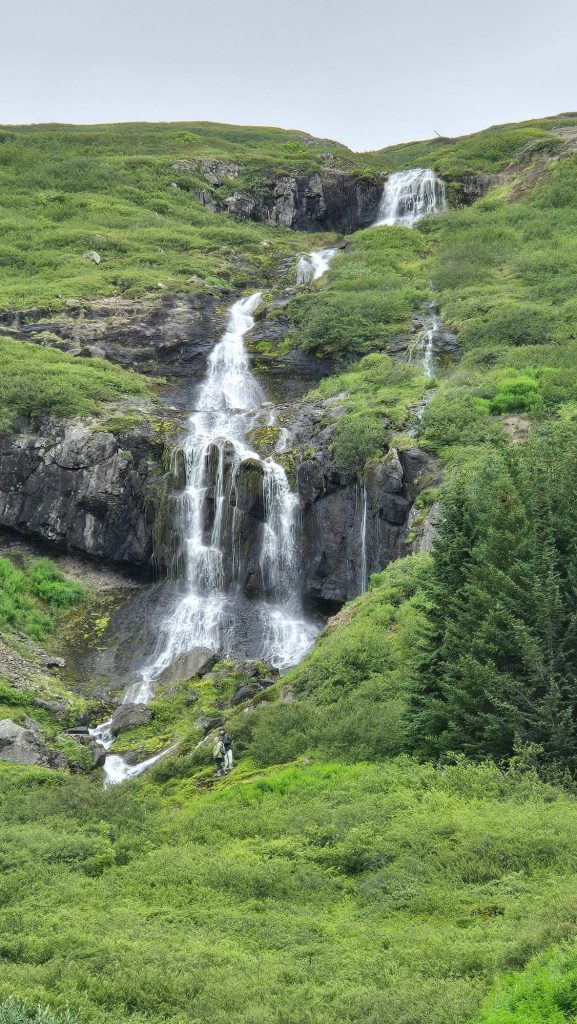
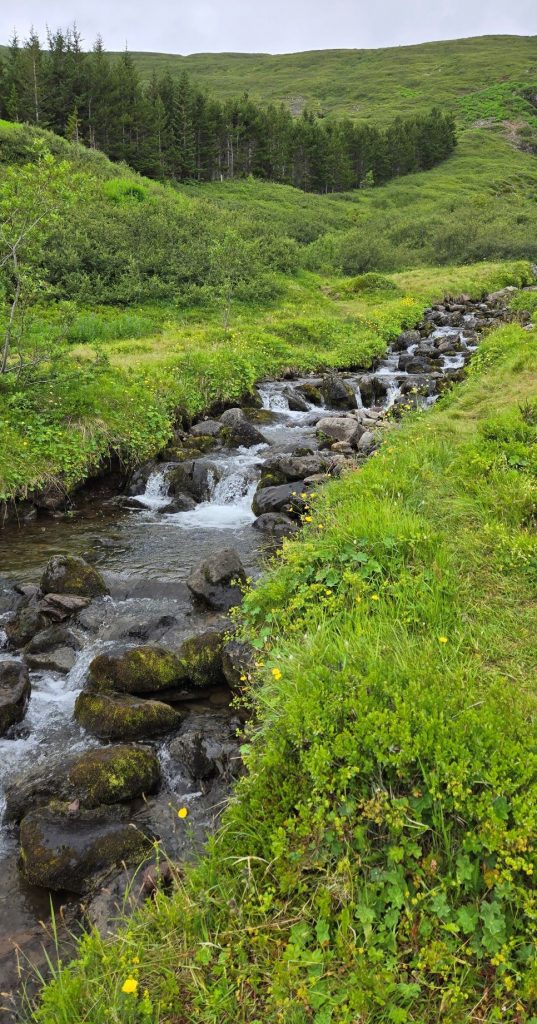
We got off the bus and the driver handed us plastic cups while our guide filled a restaurant style plastic pitcher with water from the stream, doling out samples to the curious. He then noted the water was so pure because there were no sheep in the mountains to contaminate it. It tasted remarkably like…water.
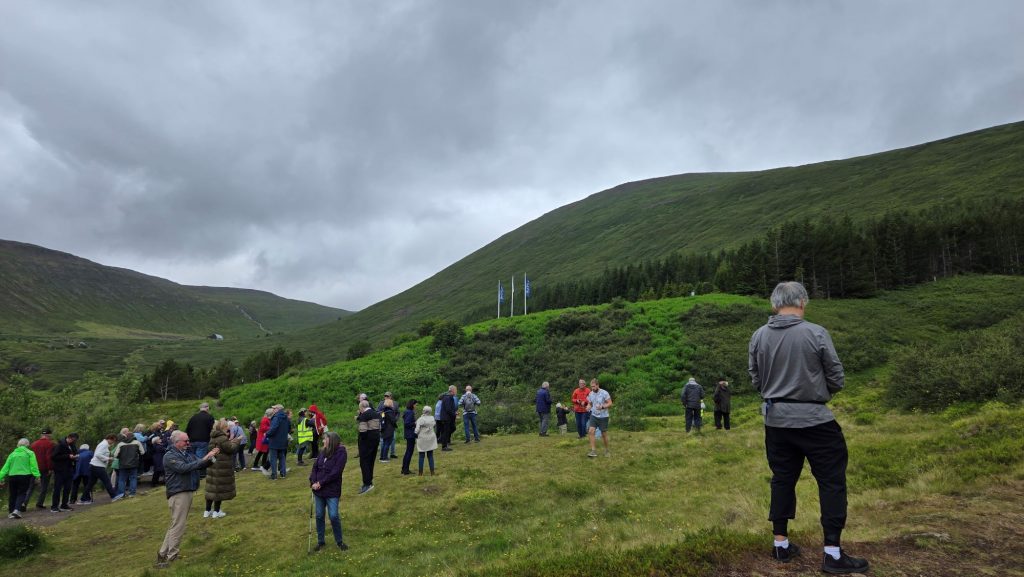
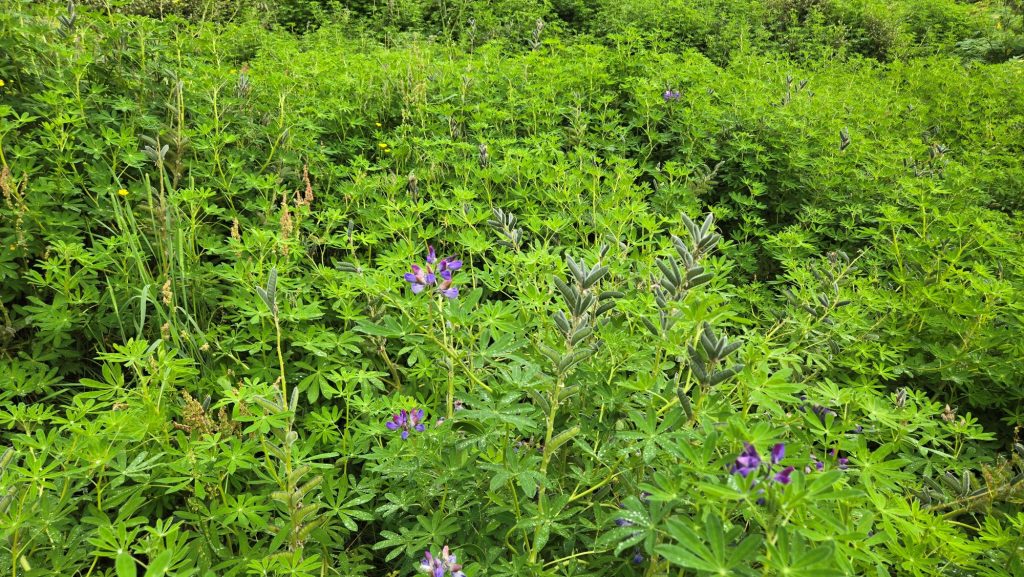
Thirst quenched, we handed our cups to the driver and boarded the bus. Satisfied we were all accounted for, our guide told us a tale about a different tour.
“Before leaving, the driver asked if anyone was missing. No one spoke up so he pulled out of the parking lot. Just then he noticed a woman in the road behind him, waiving her hands frantically. He stopped and said ‘I thought no one was missing.’ A man a few seats back said, ‘That’s my wife. She’s always late for everything, so I thought this would teach her a lesson.’ “
Dead man walking…
On our way back to the ship we passed the Tungudalsvöllur (“toon-goo-tha-lur-vote-lur”) Golf Course: 9 holes, par 70 and a three-month season. Probably the only thing my brother-in-law would find worthwhile about this trip.
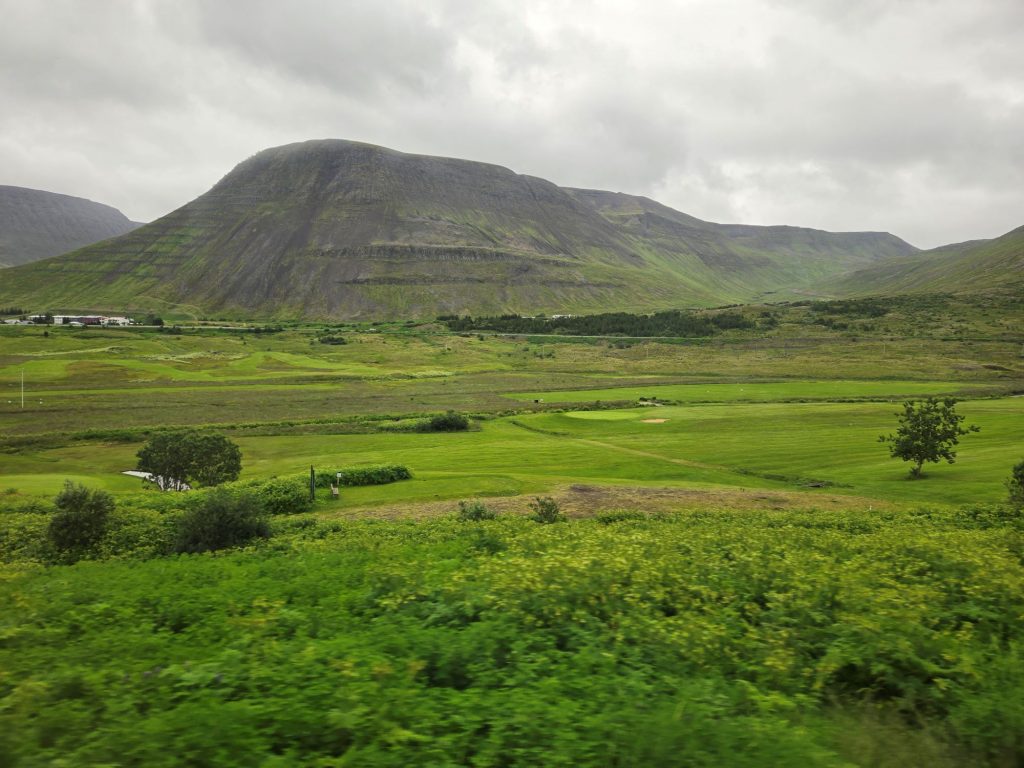
I investigated “Things to do in Ísafjörður” when I began this blog post and discovered there are two ski resorts on the mountains above Bunárfoss. Tunguladur, for downhill skiing, has 3 lifts and a ski lodge. Seljalandsdalur (“sel-ya-lands-da-lur”) is for cross-country skiing. I’m writing this during the second week of September and Ísafjörður already has snow and winter weather warnings!
Easter in Iceland is a five-day national holiday, from Holy Thursday until Easter Monday, and an opportunity for the hardy to “…flee to Iceland’s winter resorts where they ski from dawn until dark, get wasted on Black Death eat buried shark and boogey until breakfast.” (Black Death is Brennivin, Iceland’s version of aquavit, a variety of herb-flavored liqueurs that are not for the faint of heart. Chicago’s ghastly Jeppson’s Malört is another version of aquavit.)
Read Andrew Slough’s colorful account of Easter in the Westfjords here: Iceland: Skiing Isafjördur’s Chutes.
Next port of call: Akureyri. The “Capital of the North,” the Botanical Gardens, and a grand view of the town from their ski-resort.
Featured Image: Hansueli Krapf, 2002. Licensed under the Creative Commons Attribution-Share Alike 4.0 International license. All other pictures are mine except where noted, and are used under the Creative Commons Share Alike public license. Click here for details: CC BY-SA.
